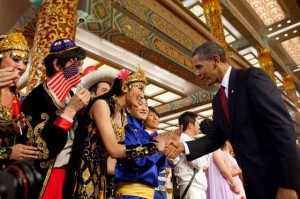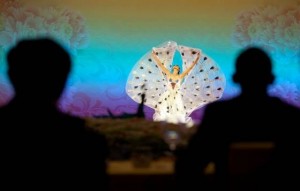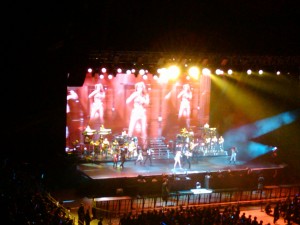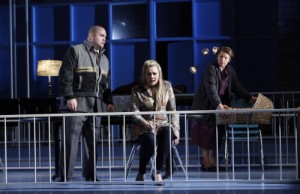by Cathy Barbash
Last month I stopped in on the Arts Fair associated with the 11th China Shanghai International Arts Festival. Fair operations and content were, for the most part, profoundly disappointing. Created as China’s answer to Arts Presenters, they’ve never gotten it right. As a result, attendance numbers are poor, most major agents, venues and artists stay away, with structure, operations and content not showing an understanding of how the international field works. Meanwhile, commercial trade fair behemoth Messe Frankfurt’s Shanghai division has succeeded in organizing the multifaceted (exhibit hall, seminars, performances, etc.) highly attended Music China for several years.
Shanghai is the most ambitious and globally focused Chinese city, so it is surprising that the leaders of the cultural bureau have not addressed the situation. Each year Shanghai’s mayor hosts an annual International Business Leaders’ Advisory Council in order to pick the brains of the world’s corporate leaders, so the opportunity for good advice can’t be lacking. Which leads me to wonder; is culture too low a priority for Shanghai’s leaders to fix this potentially important and useful annual event? Are they just waiting for it to die a natural death? Or is there something else going on too far below the surface for us to know about? Probably some of each.
My next stop was Beijing, where fresher breezes were blowing. Both the Ministry of Culture and the U.S. Embassy have welcomed new blood, and during a day split between them, officers in both places acted with new energy and openness. This expansive attitude has allowed my colleagues to enjoy the many, varied and sometimes unexpected opportunities to meet and mix. Officials from both the U.S. and China found their way to Beyoncé’s Beijing concert. Later that weekend, when Cultural Affairs Officer Dale Kreisher ventured out to the suburbs to an open house at the Red Gate Gallery’s Artist in Residence studios, astonished Red Gate director Brian Wallace exclaimed that in his 20 years in China, he had never before met an American CAO.
About that Beyoncé concert….The concert was held at the Wukesong Arena, the former Olympic basketball venue. It is now managed by AEG, which will also run the new arena built for the Shanghai World Expo. The horizontally and vertically integrated AEG booked and presented Beyoncé, with the usual dowry of sponsors. Tickets were really truly sold out. As one approached the perimeter of the venue, instead of the usual ubiquitous hawkers waving tickets, one saw desperate hawkers and fans waving large wads of cash. The wildly enthusiastic crowd was a mix of locals and expats, and for the first time at such a concert, alcohol sales were permitted.
The behavior of the Public Security Police provided the only nervous moments, as they ringed the ground level and forced people back into their seats whenever they jumped to their feet to dance and cheer. Here was the generation gap, cultural gap and political gap, live and in person. I feared that guard-fan violence might erupt, but somehow détente prevailed. The intro to each popular hit was greeted with wild cheering, but near the end of the evening, “At Last,” elicited no response. Few in the audience knew Etta James, had seen “Cadillac Records,” or remembered that Beyoncé had sung this at Obama’s Inauguration, but those of us Americans of a certain age caught our breath. As the large screen at the back of the stage now filled with a montage of the Civil Rights struggle, our hearts rose in our mouths. When, inevitably, images of the Obama campaign and Inauguration arrived, the Chinese and young expats roared, and the rest of us were in tears.



